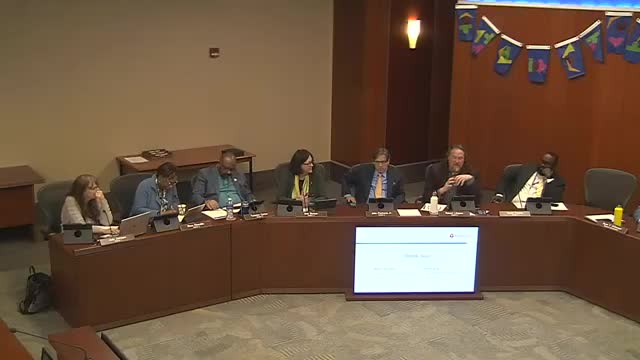Minneapolis City Council prioritizes community input on transit shelter placements
March 09, 2025 | Metropolitan Council, Agencies, Boards, & Commissions, Executive, Minnesota
This article was created by AI summarizing key points discussed. AI makes mistakes, so for full details and context, please refer to the video of the full meeting. Please report any errors so we can fix them. Report an error »

During a recent meeting of the Minnesota Metropolitan Council, discussions highlighted the importance of community engagement in the placement of transit shelters. A council member shared a personal experience from their time on the Minneapolis City Council, illustrating the potential conflicts that can arise when shelters are installed without adequate local input. They recounted a situation where a proposed shelter was initially set to be placed in front of a business's display window, which could have negatively impacted the business's visibility and commerce. Thanks to community feedback and swift action, the shelter was successfully relocated to a less intrusive site.
This anecdote underscored the need for ongoing communication between Metro Transit and local communities, particularly as new guidelines for shelter placement are implemented. The council member emphasized that understanding the nuances of community concerns—such as light pollution from illuminated shelters—can lead to better outcomes for all involved.
In response, Metro Transit officials confirmed that they do reach out to adjacent property owners before construction begins. They aim to avoid placing shelters in front of doorways or windows and have made adjustments based on community feedback in the past. This proactive approach is intended to ensure that the needs and concerns of local residents and businesses are considered in the planning process.
As the Metropolitan Council moves forward with its new guidelines, the emphasis on community engagement will be crucial in fostering positive relationships and ensuring that transit infrastructure serves the public effectively without disrupting local commerce or community aesthetics. The council's commitment to listening to residents and adapting plans accordingly reflects a growing recognition of the importance of community input in urban planning.
This anecdote underscored the need for ongoing communication between Metro Transit and local communities, particularly as new guidelines for shelter placement are implemented. The council member emphasized that understanding the nuances of community concerns—such as light pollution from illuminated shelters—can lead to better outcomes for all involved.
In response, Metro Transit officials confirmed that they do reach out to adjacent property owners before construction begins. They aim to avoid placing shelters in front of doorways or windows and have made adjustments based on community feedback in the past. This proactive approach is intended to ensure that the needs and concerns of local residents and businesses are considered in the planning process.
As the Metropolitan Council moves forward with its new guidelines, the emphasis on community engagement will be crucial in fostering positive relationships and ensuring that transit infrastructure serves the public effectively without disrupting local commerce or community aesthetics. The council's commitment to listening to residents and adapting plans accordingly reflects a growing recognition of the importance of community input in urban planning.
View full meeting
This article is based on a recent meeting—watch the full video and explore the complete transcript for deeper insights into the discussion.
View full meeting
